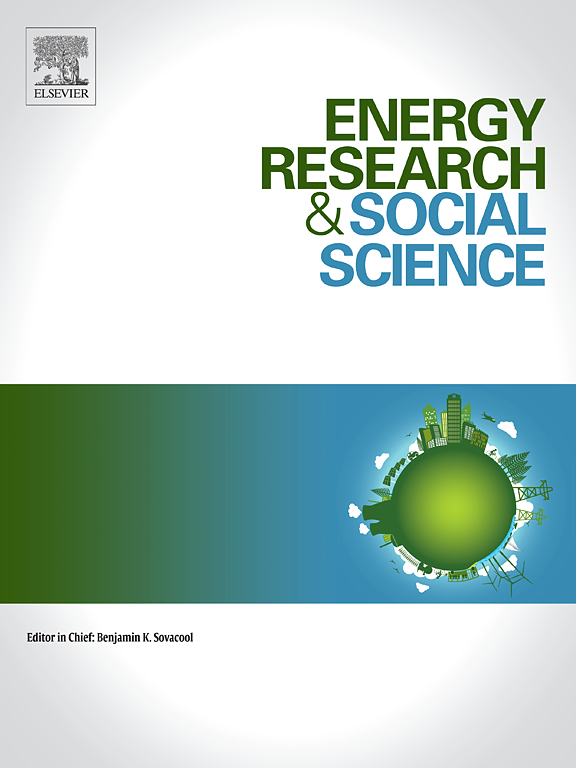50 shades of hydrogen: A perspective on definitions in science and public communication
IF 7.4
2区 经济学
Q1 ENVIRONMENTAL STUDIES
引用次数: 0
Abstract
Discussions about the transition to hydrogen in various applications have become an important topic in recent years. A key factor for an effective transition is public acceptance of hydrogen technologies. However, the increase in acceptance depends, among other things, on individual knowledge about the hydrogen colors and the linked hydrogen production pathways currently under discussion. In communications, colors such as green, grey and blue are used to distinguish hydrogen sources. With new research, additional colors have become necessary. Unfortunately, there is no unified definition for the colors.
The aim of this perspective is to identify the most frequent hydrogen colors used by scientists and the public, derive open definitions and propose a solution to a representation problem. The general use of hydrogen colors in communication and the implications on public acceptance are briefly outlined. We then identified definitions for colors associated with a specific pathway and discussed some discrepancies between science and media use. To make better use of the existing colors, more open definitions were formulated. We point out the representation problem with shades of a color and provide a connection between the assigned color and a view-independent RGB color code as proposal. The derived definitions can be used to unify communication in science and public media.
氢的50种色调:科学和公共传播定义的视角
近年来,关于向氢过渡的各种应用的讨论已成为一个重要的话题。有效转型的一个关键因素是公众对氢技术的接受程度。然而,接受度的提高除其他外,还取决于个人对氢颜色的了解以及目前正在讨论的相关氢生产途径。在通信中,绿色、灰色和蓝色等颜色被用来区分氢的来源。随着新的研究,额外的颜色变得必要。不幸的是,对颜色没有统一的定义。这个视角的目的是确定科学家和公众使用的最常见的氢颜色,得出开放的定义,并提出一个解决方案来表示问题。简要概述了氢色在通信中的一般使用及其对公众接受程度的影响。然后,我们确定了与特定途径相关的颜色定义,并讨论了科学和媒体使用之间的一些差异。为了更好地利用现有的颜色,制定了更开放的定义。我们指出了颜色深浅的表示问题,并作为建议提供了分配的颜色和与视图无关的RGB颜色代码之间的连接。衍生的定义可以用来统一科学传播和公共媒体。
本文章由计算机程序翻译,如有差异,请以英文原文为准。
求助全文
约1分钟内获得全文
求助全文
来源期刊

Energy Research & Social Science
ENVIRONMENTAL STUDIES-
CiteScore
14.00
自引率
16.40%
发文量
441
审稿时长
55 days
期刊介绍:
Energy Research & Social Science (ERSS) is a peer-reviewed international journal that publishes original research and review articles examining the relationship between energy systems and society. ERSS covers a range of topics revolving around the intersection of energy technologies, fuels, and resources on one side and social processes and influences - including communities of energy users, people affected by energy production, social institutions, customs, traditions, behaviors, and policies - on the other. Put another way, ERSS investigates the social system surrounding energy technology and hardware. ERSS is relevant for energy practitioners, researchers interested in the social aspects of energy production or use, and policymakers.
Energy Research & Social Science (ERSS) provides an interdisciplinary forum to discuss how social and technical issues related to energy production and consumption interact. Energy production, distribution, and consumption all have both technical and human components, and the latter involves the human causes and consequences of energy-related activities and processes as well as social structures that shape how people interact with energy systems. Energy analysis, therefore, needs to look beyond the dimensions of technology and economics to include these social and human elements.
 求助内容:
求助内容: 应助结果提醒方式:
应助结果提醒方式:


